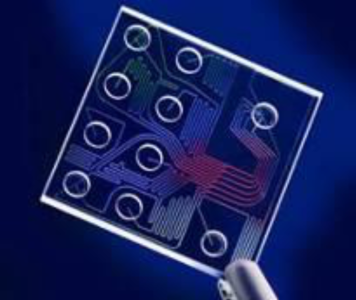Integration of optical detection in microfluidic systems for space exploration missions

This document describes the activities and the findings performed in the frame of the ODET-μ (Optical DETection in Microfluidics) project by Kayser Italia, a SME enterprise.
In this project, technologies for the integration of optical components were reviewed to define the “state of the art” in the field of integrated optics for detection on Lab On a Chip devices (LoCs).
LoCs are microfluidics based systems aiming at the miniaturization onto a single substrate (chip) of several functionalities that typically would require an entire biological laboratory.
Although only few commercial devices are in the market, LoC is claimed as a revolutionary technology in the field of Life Sciences being capable of triggering research and supporting point of care diagnostics.
This is due to the following advantages: high sensitivity, speed of analysis, low sample and reagent consumption, and measurement automation and standardization. Overall cost reduction would pave the way to LoCs into every day laboratory practice.
Presently, optical detection is the main limitation of LoCs. As a matter of fact, it is performed “off-chip” frustrating the advantages of miniaturization.
Results of the review were presented and improved in a meeting with representatives from both Academia and Industry involved in the field. Outcomes show that new technology developments on integration of optical components on Lab On a Chip are currently underway.
In this frame optofluidics is an emerging field of research.
Traditional integration technologies (such as Silica on silicon planar technology, Ionexchange in glasses, Soft-lithography in polymers) and novel technologies (Femtosecond laser micromachining, Liquid core waveguides, Plasmonic detectors, Optical microresonators) are reviewed and reported.
Detection methods for biological assay are critically discussed for LoC application with respect to the bio-parameters of interest of ESA.
A trade-off among available technologies for the integration of optical detection components on LoC has been carried out. Results showed that integration of optical elements on LoC is feasible.
Silica on silicon planar technology is the candidate technology to be involved in the frame of space missions. Possible application of this technology are presented.
The boundary of integration of optical components is discussed and a hybrid approach, based on a partial integration, is proposed as a reliable set-up.
Intricacies on bioassay development in microfluidics are a main limiting factors for the development of LoC based devices. Fluorescence based assay is the most effective method to be used for biomonitoring, health care, and research application.
A concept for the integration of solid state sensor, capable of single photon counting, for fluorescence detection is proposed as a prospective for a new development in this field with unmatched sensitivity.
Noteworthy, the field of application of such technology can be extended to Biomonitoring, Health Care, and Life Science research applications.
